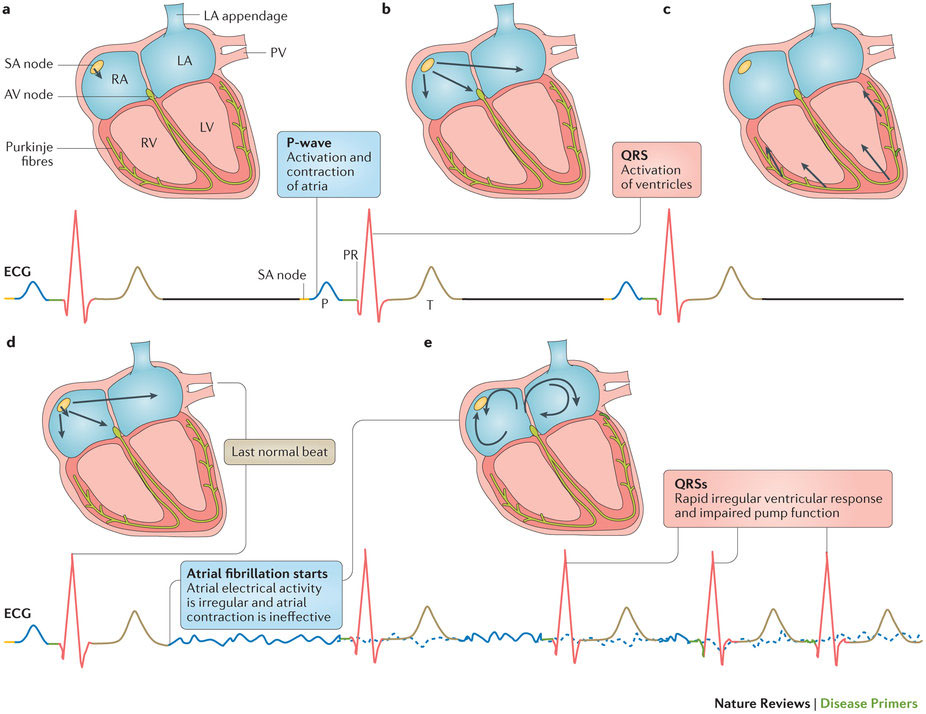Review Abstract
心房細動
Atrial fibrillation
2016年3月31日 Nature Reviews Disease Primers Article number: 16016 (2016) doi: 10.1038/nrdp.2016.16

心房細動(AF)は、最もよく見られる持続性心調律異常であり、年齢や併存する心血管疾患の数に応じて有病率が増加する。AFは、速くて不規則な心拍を特徴とし、無症候性の場合もあるが、動悸、呼吸困難、眩暈などの症状が現れることもある。この疾患は脳卒中リスクの増加のような重篤な合併症に関連することもある。最近、AFの臨床疫学と管理が大きく進展したことによって、この不整脈へのアプローチに情報がもたらされた。このPrimerでは、AFの疫学から発症機序と病態生理学、診断、スクリーニング、予防および管理法までを含む包括的概観について取りまとめる。脳卒中予防、心拍数管理および心調律管理などの管理戦略についても考察する。さらにQOL問題についても取り上げ、このよく見られる不整脈の管理に関する進行中の臨床試験ならびに今後の開発の見通しについても解説する。
PrimeView
心房細動は心臓の電気的興奮が無秩序に伝播されることによって生じる。続いて生じる血液ポンプ機能の不良によって凝固と血栓症のリスクが増加することから、心房細動患者に優先される最も重要な管理は脳卒中予防である。
本Primerの図解サマリー
Atrial fibrillation (AF) is the most common sustained cardiac rhythm disorder, and increases in prevalence with increasing age and the number of cardiovascular comorbidities. AF is characterized by a rapid and irregular heartbeat that can be asymptomatic or lead to symptoms such as palpitations, dyspnoea and dizziness. The condition can also be associated with serious complications, including an increased risk of stroke. Important recent developments in the clinical epidemiology and management of AF have informed our approach to this arrhythmia. This Primer provides a comprehensive overview of AF, including its epidemiology, mechanisms and pathophysiology, diagnosis, screening, prevention and management. Management strategies, including stroke prevention, rate control and rhythm control, are considered. We also address quality of life issues and provide an outlook on future developments and ongoing clinical trials in managing this common arrhythmia.

